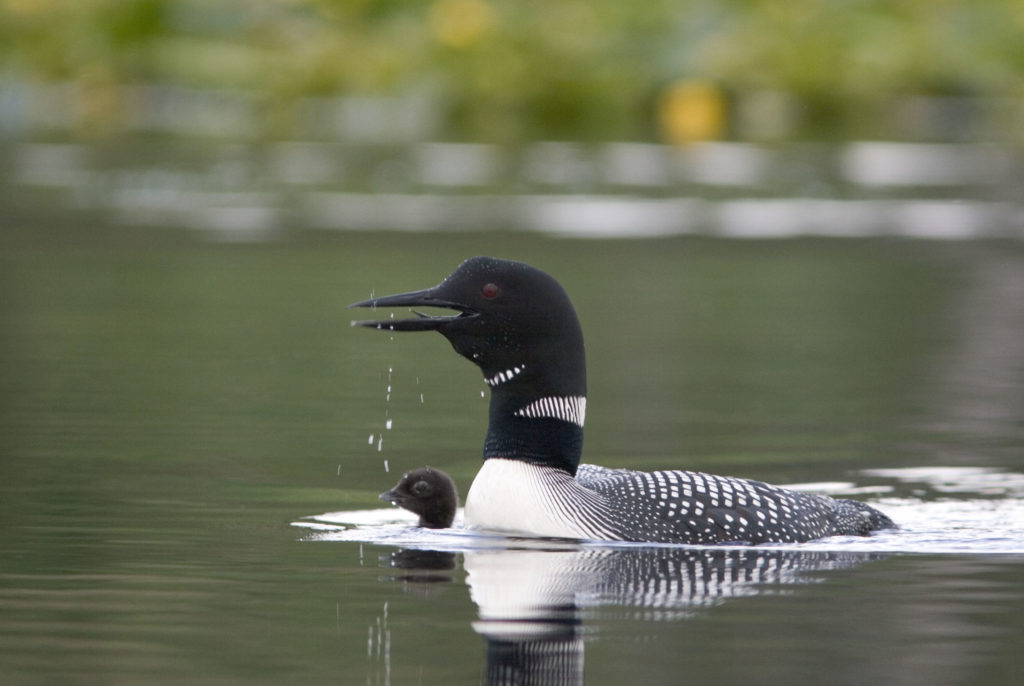
The Call of the Loon
by Susan Patla, Non-game biologist for WGFD and NMJH Science Advisory Committee member
The call of a loon echoing across a still mountain lake is a sound that embodies the essence of wilderness. Biodiversity Research Institute (BRI), in partnership with Yellowstone and Grand Teton National Parks and Wyoming Game & Fish Department (WGFD), recently completed a fifth field season to monitor and study common loons in Wyoming. This project has been funded through a generous grant by the Ricketts Conservation Fund to determine the conservation status of loons in Wyoming and four other states. The loon is the rarest nesting bird species in Wyoming and a designated species of conservation concern. The Wyoming population is also the most southern nesting group in North America and isolated from the nearest neighboring population in Montana by over 200 miles. While migrating loons can be seen across the state both in spring and fall, breeding pairs currently occur only in the northwest part of the state.

Since 1987, Yellowstone NP and WGFD have been monitoring the presence of loon pairs and fledged chicks. In 2013, BRI expanded on this effort through increased monitoring of pairs during the nesting season and the capture and banding of adult loons. In 2017, there were 21 territorial pairs documented (15 of which were in Yellowstone), and at least 12 of these attempted to nest. Eight pairs successfully hatched a total of ten chicks and all survived to fledging. Seven unpaired adults and one immature loon were also seen. One territorial female adult was captured and banded, and young were banded at two additional sites. Results from blood and feather samples for mercury and genetic analyses will be available later. BRI also deployed nest rafts at four sites and worked with agencies to implement management measures to protect nesting pairs.

Compared to 2016, Wyoming had one fewer territorial pair and productivity was slightly lower than previous years. Nest success was affected this year by the above average snowfall, and late ice-out on many of the nesting lakes which were still frozen in early June. Rapid runoff resulted in flooding at a few sites also. Surveys of many backcountry lakes were also restricted in the early season due to lingering deep snow conditions. Productivity, however, over the study period has been above the 0.48 chicks surviving per territorial pair needed for population stability. Loons have been seen in recent years in the Wind River Range although no nesting pairs have been found. In the future, translocation of chicks may be considered to help expand the nesting population in Wyoming. Major threats to this population include human disturbance of nest sites, drought, and water quality. Mercury contamination, which has been a problem in New England loons, does not appear to be affecting Wyoming loons. All documentation of loons by Nature Mappers is greatly appreciated by BRI and the partner agencies to help in understanding the distribution and movements of this magnificent bird.
Click the image to enlarge and back button to get back to post. Photos by Mark Gocke, WGFD.






